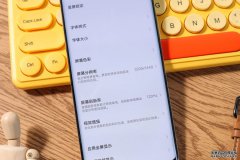中秋佳节特别推荐:三孔布币
提起“三孔布”,泉界如雷贯耳,是公认的古泉五十名珍之一。2010年5月11日在中国古钱专场中,存世孤品——战国赵铸大型“武阳”背“一两”三孔布经过近40次激烈竞价,最终以352.8万元人民币成交,创出古钱拍卖新纪录。坊间有一种说法,没有收藏“三孔布”的人,不能称为钱币收藏大家,每种“三孔布”都有一部传奇。
The mention of "three-hole cloth" is one of the fifty treasures of ancient springs. On May 11, 2010, in the special exhibition of ancient Chinese money, the surviving orphan, Zhao Zhu's large-scale "Wuyang" back "one or two" three-hole cloth in the Warring States Period, after nearly 40 fierce bids, finally traded for 3528,000 yuan, creating a new record of ancient money auction. There is a saying in the workshop that people who do not collect "three-hole cloth" cannot be called coin collectors. Every "three-hole cloth" has a legend.

“三孔布”是春秋战国时期首次在钱体上记铸地、记重量的钱币,分大小二等币值,大者一两,小者十二朱(铢),因钱体有三孔,故俗称“三孔布”,由圆首圆肩圆足布发展演化而来。大者一般长6.8-7.6cm,重12-19.5g。小者一般长5-5.6cm,重6-9g。三孔布的铸地,有赵铸、中山铸、秦铸三说;根据其出土区域、地名、形制等因素考证,目前倾向于赵铸说。国内出版物也有图形介绍,不仅有“三孔布”,还有“单孔布”(彭信威《中国货币史》)。
"Three-hole cloth" is the first time in the Spring and Autumn Period and Warring States Period to record the place and weight of coins on the body, divided into two second-class currency values, the big one or two, the small twelve Zhu (baht). Because the body of money has three holes, it is commonly known as "three-hole cloth", which evolved from the round shoulder and round foot cloth. The elders are generally 6.8-7.6 cm in length and 12-19.5 g in weight. The smaller ones are generally 5-5.6 cm long and weigh 6-9 G. The three-hole cloth casting sites are Zhao Zhu, Zhongshan Zhu and Qin Zhu. According to the unearthed area, place name, shape and other factors, Zhao Zhu is now inclined to say. There are also graphic presentations in domestic publications, including "three-hole cloth" and "single-hole cloth" (Peng Xinwei's History of Chinese Currency).

由于三孔币的形制和圆首圆肩圆足布相似,但在首部及两足穿孔,故习称为三孔布,其铸造国别有赵国、秦国、中山国三说,铸行年代也有公元前4世纪、3世纪的争议,分歧较大。自清中期始入谱录后,无论残、全均被视为珍品,但藏品大多流散海外。目前所知收藏三孔布最富者为日本银行,国内除少数公立博物馆外,私人收藏寥寥无几。
Because the shape of the three-hole coin is similar to that of the round shoulder round foot cloth, but it is perforated in the first part and both feet, so it is commonly called the three-hole cloth. The founding countries of the three-hole coin are Zhao, Qin and Zhongshan. The founding age of the three-hole coin is also controversial in the 4th and 3rd centuries B.C. There are great differences. Since the mid-Qing Dynasty, the collection has been regarded as a treasure both in remnants and in whole, but most of the collections have been scattered abroad. At present, the richest person known to collect Sankongbu is the Bank of Japan. In addition to a few public museums, there are few private collections in China.
三孔布历来受到各大藏家的追捧,其无论残、全均被视为泉中珍品。2012年秋,原系道光时张延济所藏的“下阳”背“十七两”三孔布,北京诚轩以368万拍出,可见其之珍贵。故有泉书认为三孔布“是布币中最稀少一种”,“实物多已湮没无闻,保存在私人手中或文物部门的寥若晨星”。
Sankongbu has always been sought after by the major Tibetans. It is regarded as a treasure in the spring whether it is disabled or not. In the autumn of 2012, the original Daoguang time Zhang Yanji's "Xiayang" back "172" three-hole cloth was photographed by Chengxuan in Beijing with 368,000, which shows its preciousness. Therefore, Quanshu believes that the three-hole cloth is "the rarest kind of cloth coin", "most of the objects have been obscured, and few of them are kept in private hands or in the cultural relics department.
郑州臻哲网络科技有限公司
Zhengzhou Zhen Zhe Network Technology Co., Ltd.
咨询热线:4006863616
Hotline: 4006863616

- 新闻
- 房产
- 汽车
- 娱乐
- 体育





















